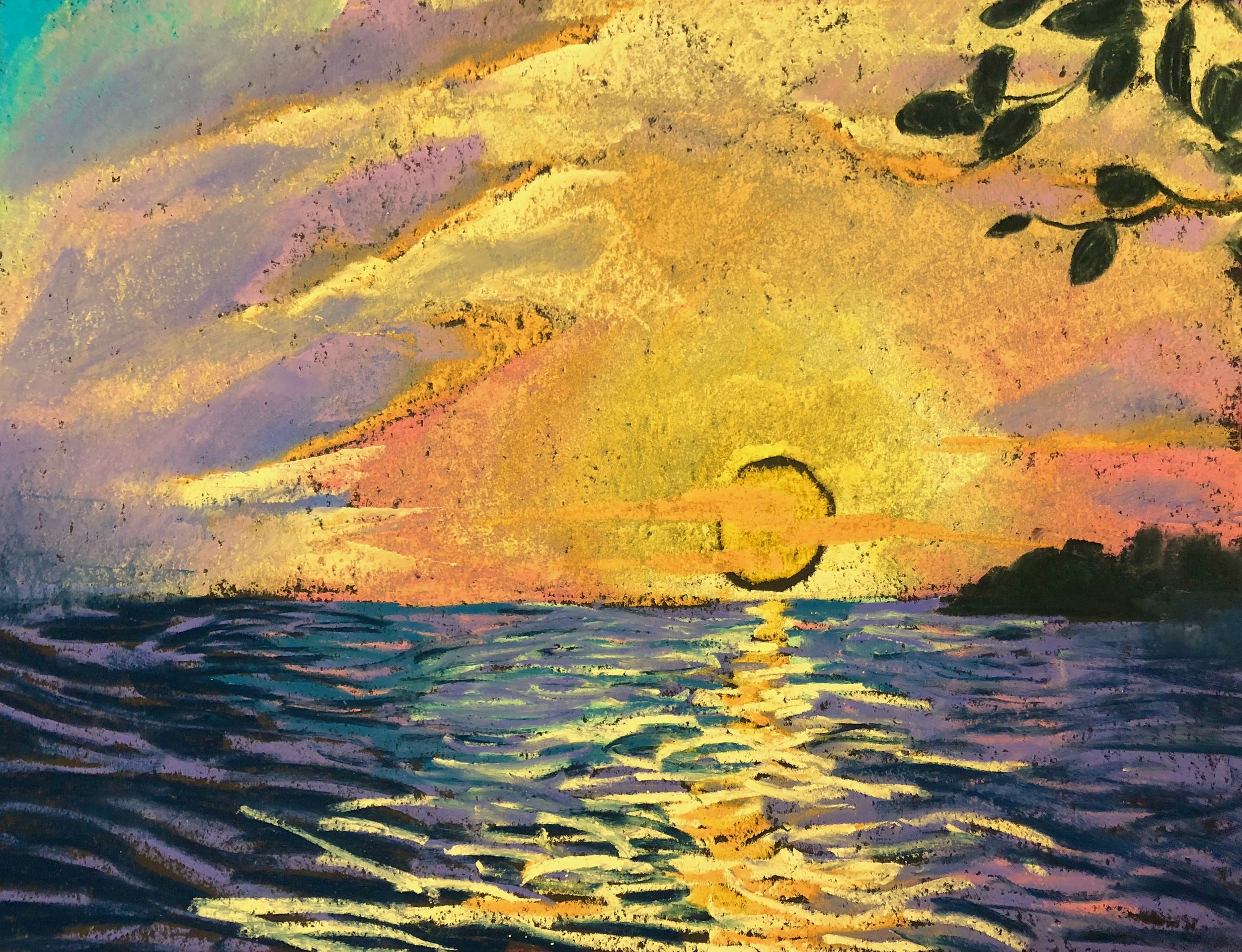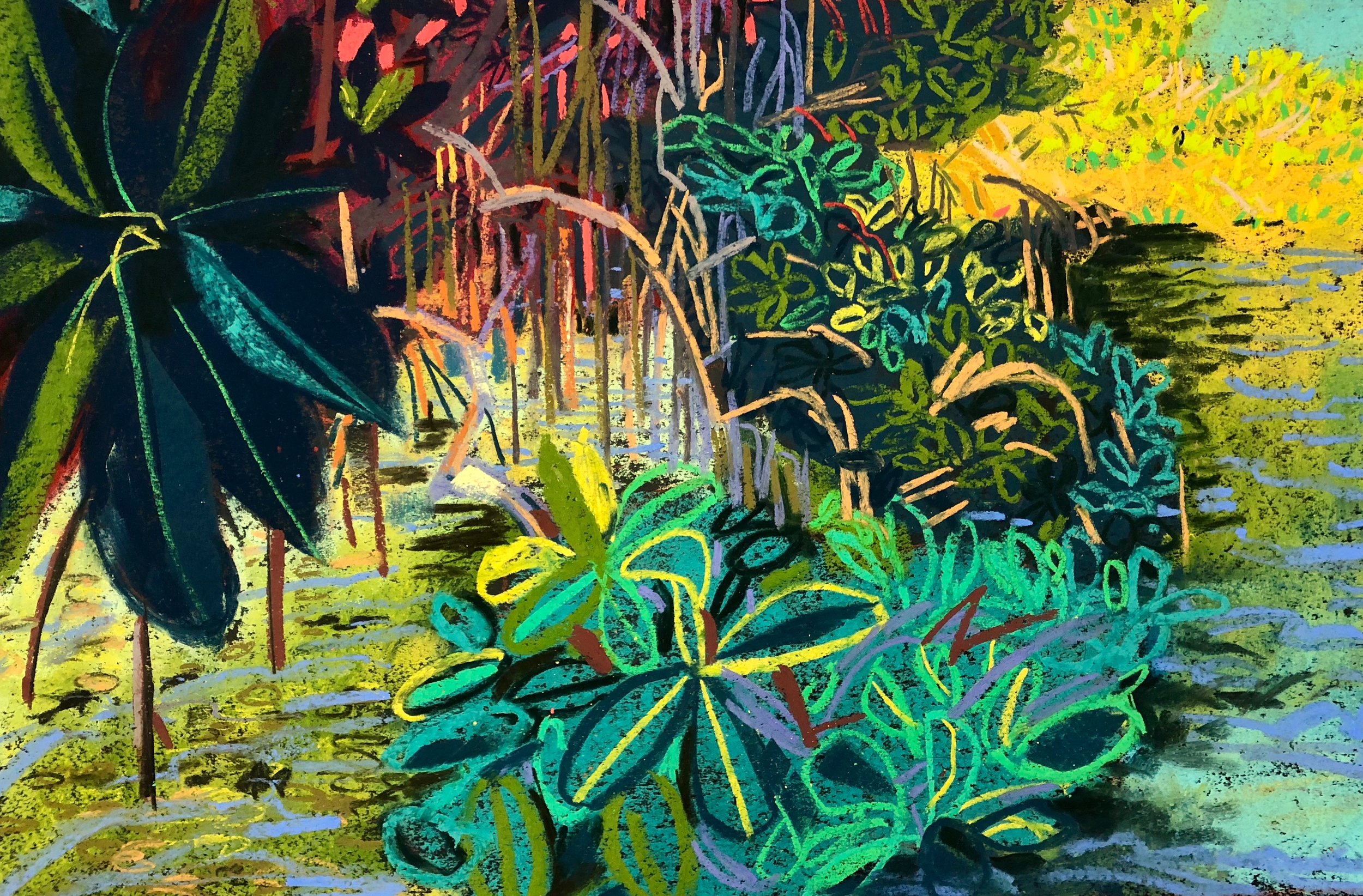Biscayne National Park is unique in that 95% of the park is underwater. Aside from the small, mangrove-forested islands, known as keys, most of the park is made up of seagrass beds and vast coral reefs.
I took a short stroll near a mangrove forest at the entrance to the park, and admired the tiny fish that lived beneath the mangrove roots that reach into the sea and seemingly hold the shoreline in their grasp.
But the only real way to experience the park is beneath the waves, so I hopped on one of the coral reef snorkeling tour bouts and headed off into the sparkling turquoise waters.
Armed with a bag filled with a grease pencil and oil pastels (because they are water-resistant) and a diver’s board made for writing notes to communicate underwater, I dove in.
The waves were rocky, and I found myself tossed and twirled around, trying to keep my snorkel from filling up. But beneath the surface was an incredible garden of waving purple sea fans, knobby lime green coral, and dozens of different kinds of fish, rising and falling with the waves just like me.
I drew while looking beneath me, watching the fish and coral move and sway, and seeing how the color changed as the water became shallower and deeper with each wave. The hardest part was only having 2 chances to make a drawing (each side of one board), so I often found myself drawing over what I had drawn before, so that I could put new ideas down.
After snorkeling and drifting for an hour or so, we climbed back into the boat. The captain had been very excited to hear I was drawing, although I think she was less than impressed with the results. The thing about drawing is that it’s an exercise in observation and memory, not necessarily an activity to produce a final result. It is the act of drawing that matters, not the final drawing itself. When I got home, the drawings I made underwater became the basis for my illustration of Biscayne in the book.





